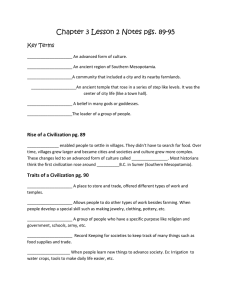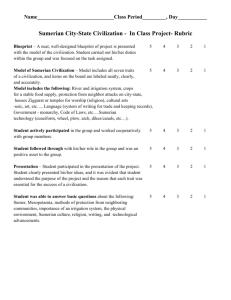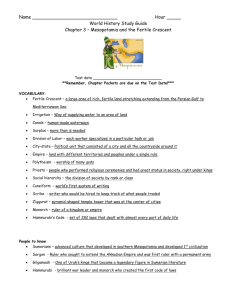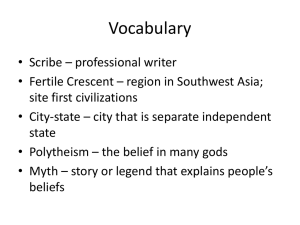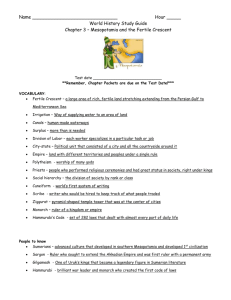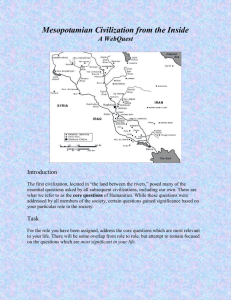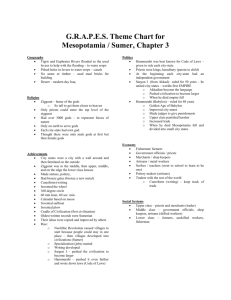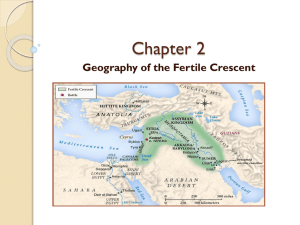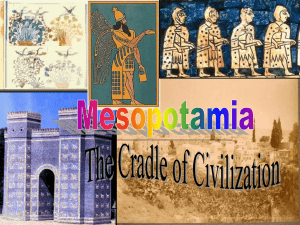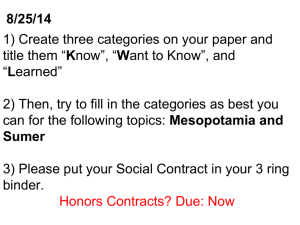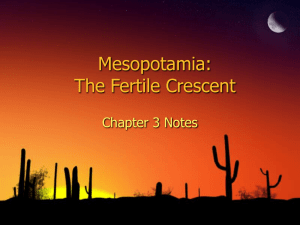MESOPOTAMIA
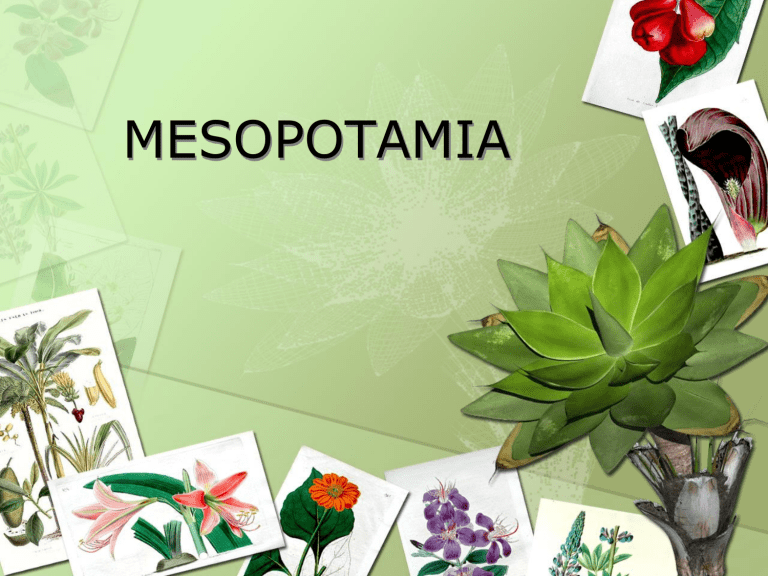
MESOPOTAMIA
• What does
Mesopotamia mean?
• The land between the rivers
(Tigris & Euphrates)
• What is a civilization?
• Civilization refers to a group of people who have organized government, religion, writing, job specialization, and art.
• When did this civilization exist?
• Where did people settle?
• About 6,000 years ago, in Asia Minor, an area that was called
Mesopotamia. Farmers lived in rural areas, while others started to move to the growing
urban cities.
• In the Middle East people settled between the rivers in what was called the fertile crescent.
• Why did they settle here?
• The Fertile Crescent was a plain that frequently flooded with melting snow from the mountains. This left the soil
VERY fertile and provided plenty of water, fish, and good crop growing land.
• How did they keep the rivers from flooding their land and still use the water?
• In the city of Sumer, humans used irrigation canals to grow massive crops. This eventually led to the
Sumerian civilization.
What was the city of
Sumer like?
• “Sumerians” built their cities out of clay bricks.
Most government, trade and religion took place in the center of the city. It was here that they built their most important building, the ziggurat.
What was a ziggurat?
• A ziggurat was a temple, which was the home of the city’s chief god, they believed in polytheism.
What is polytheism?
How did they worship their gods?
• Polytheism is the belief in many gods. “Poly” = many, and “theism” = the belief in.
• Often, they would bring offerings, or sacrifices to the temple. Many times statues of important gods would be placed high up on top of the ziggurat so as to touch the sky, or heavens. Each city had a god as a protector.
What was the role of the priests?
• The priests were to interpret the wishes of the gods. Because their gods had enormous power over the people, everyone was made to serve and worship gods .
What were some important
Sumerian inventions?
• The 12 month lunar calendar
• 360 degree circle
• Bronze (mixing copper and tin)
• The wheel
• The plow
• Medicine
• Arts – architecture, sculptures, etc.
Cuneiform • Like an alphabet to us,
Sumerian scribes used picture symbols
• To keep track of business trade transactions. Only boys could be scribes, and it was a very difficult job.
What is a city-state?
• By about 3500 B.C., some Sumerian villages had grown into large cities. A city-state was made up of a city plus the farmlands and villages around it. Each city-state had its own government, laws, and leaders.
What were some examples of these citystates?
• Ur, Eridu, and Uruk.
• What is a monarchy?
• A monarchy is a form of government where a king is the ruler of a kingdom or empire.
• Some Sumerian citystates called their ruler a “Lugal-gal”
• Sargon
(2334-
2279
B.C.)
He was Not Sumerian, but
Akkadian. Around 2300 B.C., he and his army defeated all the city-states of Sumer and northern Mesopotamia. He established the world’s first
“empire,” or land with different territories and peoples under a single ruler.
He ruled for 50 years.
• Hammurabi
(1792-1750
B.C.)
Hammurabi’s greatest achievement was his code of laws. This was a set of 282 laws that dealt with almost every part of daily life. We have some of the same ideas in laws today.
Example: Eye for an
Eye or Ear for an ear.
• Nebuchadnezzar
(612 -537 B.C.)
• Not a Sumerian, but a
Babylonian.
• Conquered city-states to form empire of Babylon.
• Built the Hanging
Gardens.
